MODERNITY AT LARGE IN PERU
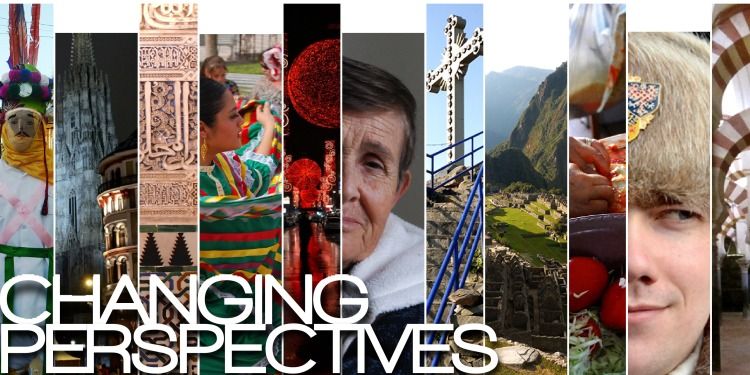 This week Prospect Journal is publishing a series of photo journals about international travel - join us as we explore a diverse set of countries by reading our “Changing Perspectives: Journalism Through an International Lens” series!By Joe ArmentaStaff WriterPeru is among the fastest growing economies in Latin America as a result of export-oriented policy and an expansion of foreign direct investment. Increased growth has led to greater prosperity among many Peruvians; however, it has also run into some new and existing challenges. This photo journal provides a brief look into these issues.
This week Prospect Journal is publishing a series of photo journals about international travel - join us as we explore a diverse set of countries by reading our “Changing Perspectives: Journalism Through an International Lens” series!By Joe ArmentaStaff WriterPeru is among the fastest growing economies in Latin America as a result of export-oriented policy and an expansion of foreign direct investment. Increased growth has led to greater prosperity among many Peruvians; however, it has also run into some new and existing challenges. This photo journal provides a brief look into these issues.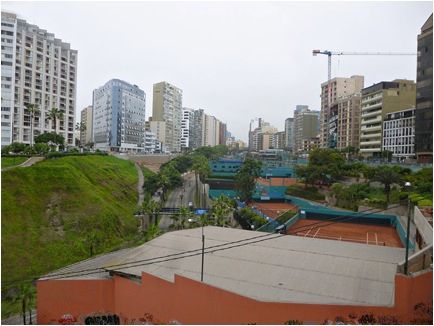 The municipality of Miraflores serves as the financial hub of the country, and is perhaps the most prominent emblem of Peru’s economic success. An expanding middle-class has created a housing boom, leading to the development of residential skyscrapers that tower over public spaces. As population density explodes in these highly concentrated urban zones, the need for central planning for utilities and infrastructure is crucial for residents.
The municipality of Miraflores serves as the financial hub of the country, and is perhaps the most prominent emblem of Peru’s economic success. An expanding middle-class has created a housing boom, leading to the development of residential skyscrapers that tower over public spaces. As population density explodes in these highly concentrated urban zones, the need for central planning for utilities and infrastructure is crucial for residents.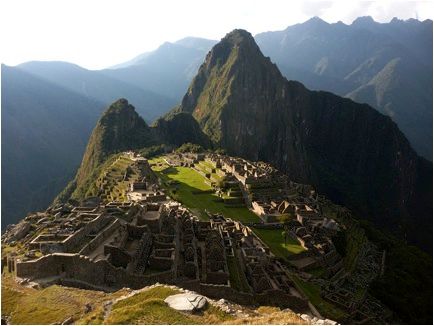 One of the key components to the Peru’s 21st-century economic strategy is foreign direct investment brought about by international tourism. Machu Picchu, one of the New Seven Wonders of the World, is at the forefront of this surge. The site attracts hundreds of thousands of visitors per year, the majority of whom spread their foreign currencies throughout the country creating a large tourist industry.
One of the key components to the Peru’s 21st-century economic strategy is foreign direct investment brought about by international tourism. Machu Picchu, one of the New Seven Wonders of the World, is at the forefront of this surge. The site attracts hundreds of thousands of visitors per year, the majority of whom spread their foreign currencies throughout the country creating a large tourist industry.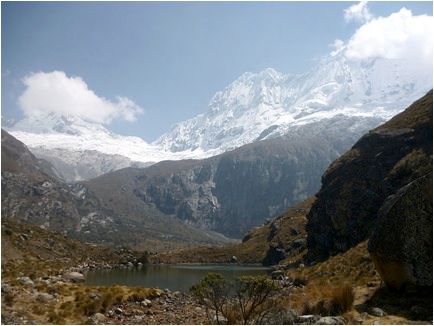 Snowy peaks provide ample environment for backpackers seeking adventure, but also provide a challenging environment for the development of small communities in the highlands. The Peruvian Andes stretch down the middle of the country separating the desert coast from the lush Amazonian rainforest. Few roads exist that wind up the peaks of these mountains, which reach more than 21,000 feet in altitude.
Snowy peaks provide ample environment for backpackers seeking adventure, but also provide a challenging environment for the development of small communities in the highlands. The Peruvian Andes stretch down the middle of the country separating the desert coast from the lush Amazonian rainforest. Few roads exist that wind up the peaks of these mountains, which reach more than 21,000 feet in altitude.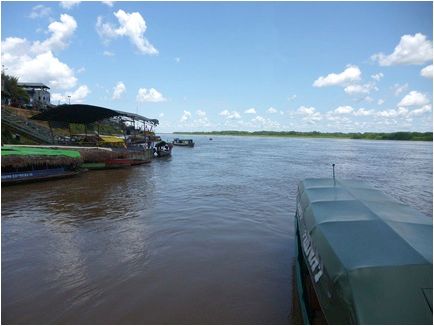 Loreto is the largest region in Peru land-wise, and also harnesses some of the biggest opportunities for growth in the nation. The Amazon rainforest possesses a wide variety of natural resources that can be used for food and pharmaceuticals. However, much of the development of the region is hindered by the lack of infrastructure. Outsiders can access this area only by plane or boat. While rivers are often referred to as the highway of the rainforest, it often takes days to reach desired destinations using boats.
Loreto is the largest region in Peru land-wise, and also harnesses some of the biggest opportunities for growth in the nation. The Amazon rainforest possesses a wide variety of natural resources that can be used for food and pharmaceuticals. However, much of the development of the region is hindered by the lack of infrastructure. Outsiders can access this area only by plane or boat. While rivers are often referred to as the highway of the rainforest, it often takes days to reach desired destinations using boats.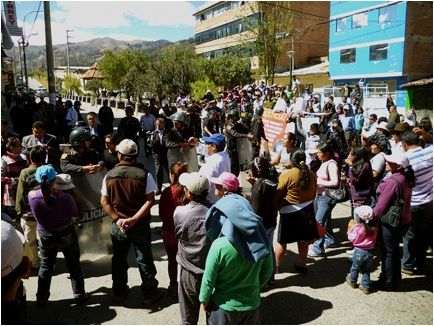 Protests are a common occurrence throughout Peru. As the highly centralized country continually grows, public servants regularly go on strike demanding higher wages. Public gatherings can be small, as is the case for this photo, or large collections of people halt the streets of the capital, Lima.
Protests are a common occurrence throughout Peru. As the highly centralized country continually grows, public servants regularly go on strike demanding higher wages. Public gatherings can be small, as is the case for this photo, or large collections of people halt the streets of the capital, Lima.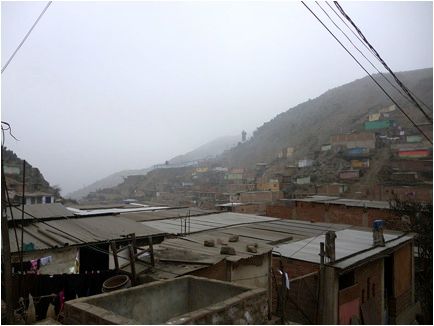 The success of the Peruvian economy should not overshadow one of the country’s most dire problems: inequality. On the outskirts of Lima, the slums of San Juan de Lurigancho house thousands of people who live in destitution. Poor living conditions are coupled with public health problems as well as the lack of basic necessities such as running water and adequate electricity. Houses are usually constructed with scrap material from industrial zones.
The success of the Peruvian economy should not overshadow one of the country’s most dire problems: inequality. On the outskirts of Lima, the slums of San Juan de Lurigancho house thousands of people who live in destitution. Poor living conditions are coupled with public health problems as well as the lack of basic necessities such as running water and adequate electricity. Houses are usually constructed with scrap material from industrial zones.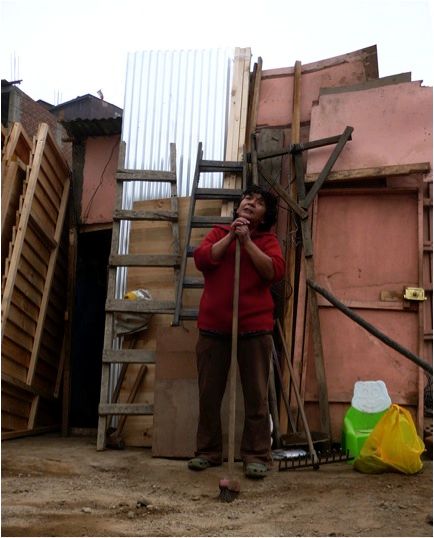 This is Patty’s house. Slum life is accompanied by many uncertainties. Access to quality education and healthcare is limited, as is the security of a long-term, well-paying job.
This is Patty’s house. Slum life is accompanied by many uncertainties. Access to quality education and healthcare is limited, as is the security of a long-term, well-paying job.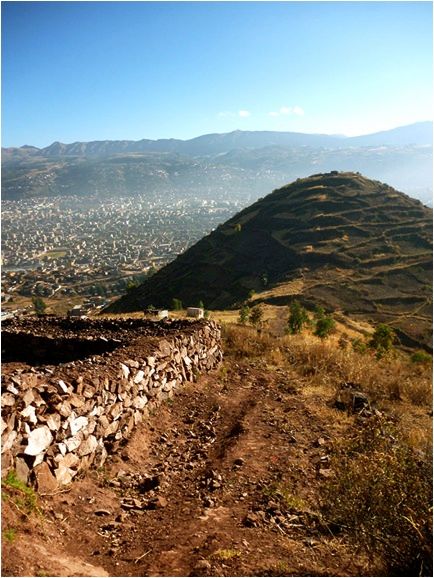 The urban explosion of Cusco, shown in the background, has pushed many residents higher into the mountainsides where utilities such as running water, sewage, and electricity are scarce. Residents often rely on traditional means to survive and build such things as terraces and llama corrals out of loose rock found nearby their homes. This creates a problem for archeologist studying the area, as many of these modern constructions are built upon centuries-old remains of the Inca civilization.
The urban explosion of Cusco, shown in the background, has pushed many residents higher into the mountainsides where utilities such as running water, sewage, and electricity are scarce. Residents often rely on traditional means to survive and build such things as terraces and llama corrals out of loose rock found nearby their homes. This creates a problem for archeologist studying the area, as many of these modern constructions are built upon centuries-old remains of the Inca civilization. While Western culture has seeped into the country in the recent years, Peruvians still devote a great deal of energy to celebrating local festivities. In October, thousands of limeños turn out to celebrate the final days of a procession paying tribute to “Nuesto Señor de los Milargos." This is a tradition that began during the colonial days and combines Catholic, African slave, and indigenous histories.
While Western culture has seeped into the country in the recent years, Peruvians still devote a great deal of energy to celebrating local festivities. In October, thousands of limeños turn out to celebrate the final days of a procession paying tribute to “Nuesto Señor de los Milargos." This is a tradition that began during the colonial days and combines Catholic, African slave, and indigenous histories.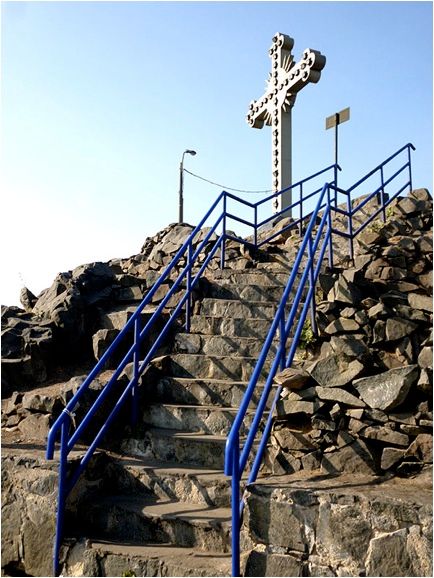 The presence of Catholicism is largely felt in Peru. During the colonial days, Catholicism was used as a form of recognizing administrative legitimacy and establishing control. Today, the religion plays more into the everyday lives of Peruvians and the decisions that they make.
The presence of Catholicism is largely felt in Peru. During the colonial days, Catholicism was used as a form of recognizing administrative legitimacy and establishing control. Today, the religion plays more into the everyday lives of Peruvians and the decisions that they make.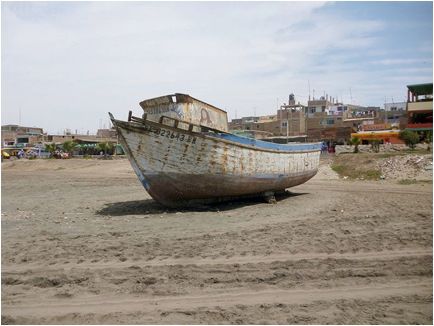 Adding to the land of ruins that makes up Peru is a boat that rests on the beach of Chiclayo. The rusty marine craft is a by-product of the fishing industry of the late 20th century. A once dominant trade, the profession has since been replaced due to several factors including a territorial dispute with Chile and the loss of government protection. As the ship slowly deteriorates, a new country is emerging with the help of a boom in economic activity. While growth has bettered the lives of many Peruvians, there is still much work to be done both in terms of social and technological advancement.
Adding to the land of ruins that makes up Peru is a boat that rests on the beach of Chiclayo. The rusty marine craft is a by-product of the fishing industry of the late 20th century. A once dominant trade, the profession has since been replaced due to several factors including a territorial dispute with Chile and the loss of government protection. As the ship slowly deteriorates, a new country is emerging with the help of a boom in economic activity. While growth has bettered the lives of many Peruvians, there is still much work to be done both in terms of social and technological advancement.
